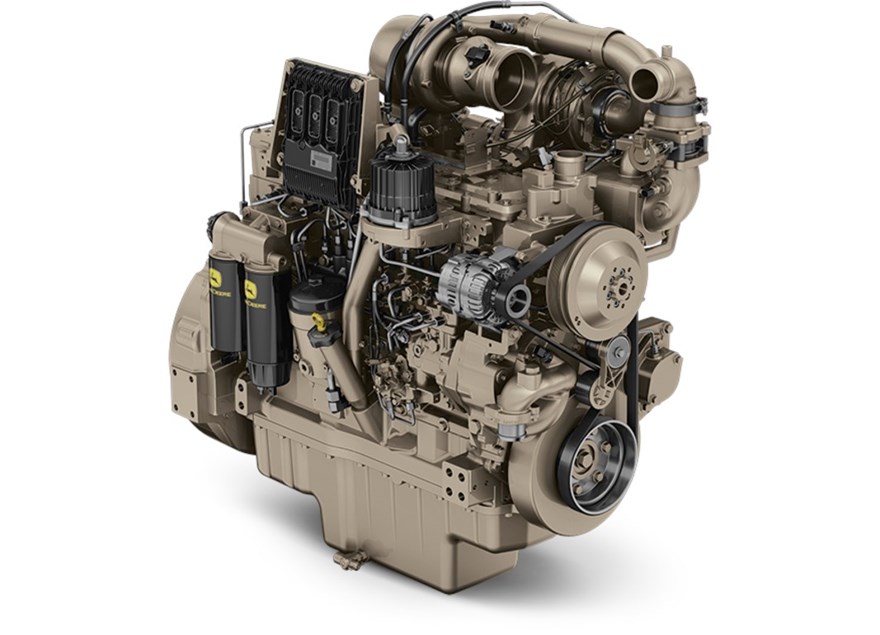Search Our Inventory: Row Crop Tractor
Search Our Inventory: John Deere 5075E
Search Our Inventory: Skid Steers
Search Our Inventory: John Deere 8370R
Search Our Inventory: Frontier Rotary Cutter
Search Our Inventory: Cotton Picker
Search Our Inventory: Lawn Mower
Search Our Inventory: John Deere Gator
Search Our Inventory: Tillage
Search Our Inventory: Zero-Turn Mower


6090HFG06
- PowerTech™ PSL
- Standby: 237-326 kW (318-437 hp) @ 1800 rpm
- Prime: 216-298 kW (290-399 hp) @ 1800 rpm
- Dual frequency available
Features
Series turbocharger
Cooled exhaust gas recirculation (EGR)
Exhaust filters
Selective catalytic reduction (SCR)
High-pressure common-rail (HPCR) and engine control unit (ECU)
4-valve cylinder head
Air-to-air aftercooled
Compact size
John Deere electronic engine controls
Additional features
Emissions Certifications
| EPA Final Tier 4 |
|---|
General engine data
| Model | 6090HFG06 |
|---|---|
| Number of cylinders | 3 |
| Displacement - L (cu in) | 9.0 (549) |
| Bore and Stroke – mm (in) | 118.4 x 136 (4.7 x 5.4) |
| Engine Type | In-line, 4-cycle |
| Aspiration | Turbocharged and air-to-air aftercooled |
| Length – mm (in) to rear of block | 1326 (52.2) |
| Width – mm (in) | 879 (34.6) |
| Height – mm (in) | 1266 (49.8) |
| Weight, dry – kg (lb) | 1096.8 (2418) |
DOC Dimensions
| Size | 5 |
|---|---|
| Diameter – mm (in) | 259.3 (10.21) |
| Length – mm (in) | 572.85 (22.55) |
| Weight – kg (lb) | 23.48 (52) |
SCR catalyst dimensions
| Size | 5 |
|---|---|
| Diameter – mm (in) | 360.88 (14.2) |
| Length – mm (in) | 784.86 (30.9) |
| Weight – kg (lb) | 47.17 (104) |
Performance data range
| Rated speed Hz (rpm) | 60 (1800) 60 (1800)† 50 (1500)** |
|---|---|
| Engine Power - Prime kW (hp) | 250 – 298 (335 - 400) --- (---) 250-256 (335-434) |
| Engine Power - Standby kW (hp) | 273 – 326 (366 – 437) 345 (463) 273 – 280 (366 – 375) |
| Generator efficiency | 91% |
| Rated fan power kW (hp) | 16.4 – 19.6 (22.0 – 26.2) 20.7 (27.8) 16.4 – 16.8 (22.0 – 22.5) |
| Power factor | 0.8 |
| Calculated generator set output - Prime kWe* (kVA) | 212 – 254 (265 – 317) --- (---) 212 – 215 (265 – 269) |
| Calculated generator set output - Standby kWe* (kVA) | 234 – 279 (292 – 349) 295 (369) 234 – 237 (292 – 296) |
| *Electrical power is calculated from the typical generator efficiency and fan power percentages shown. Applications may vary. **Performance information for 1500 rpm is preliminary data and is subject to change without notice † 345 kW rating is standby only. |

